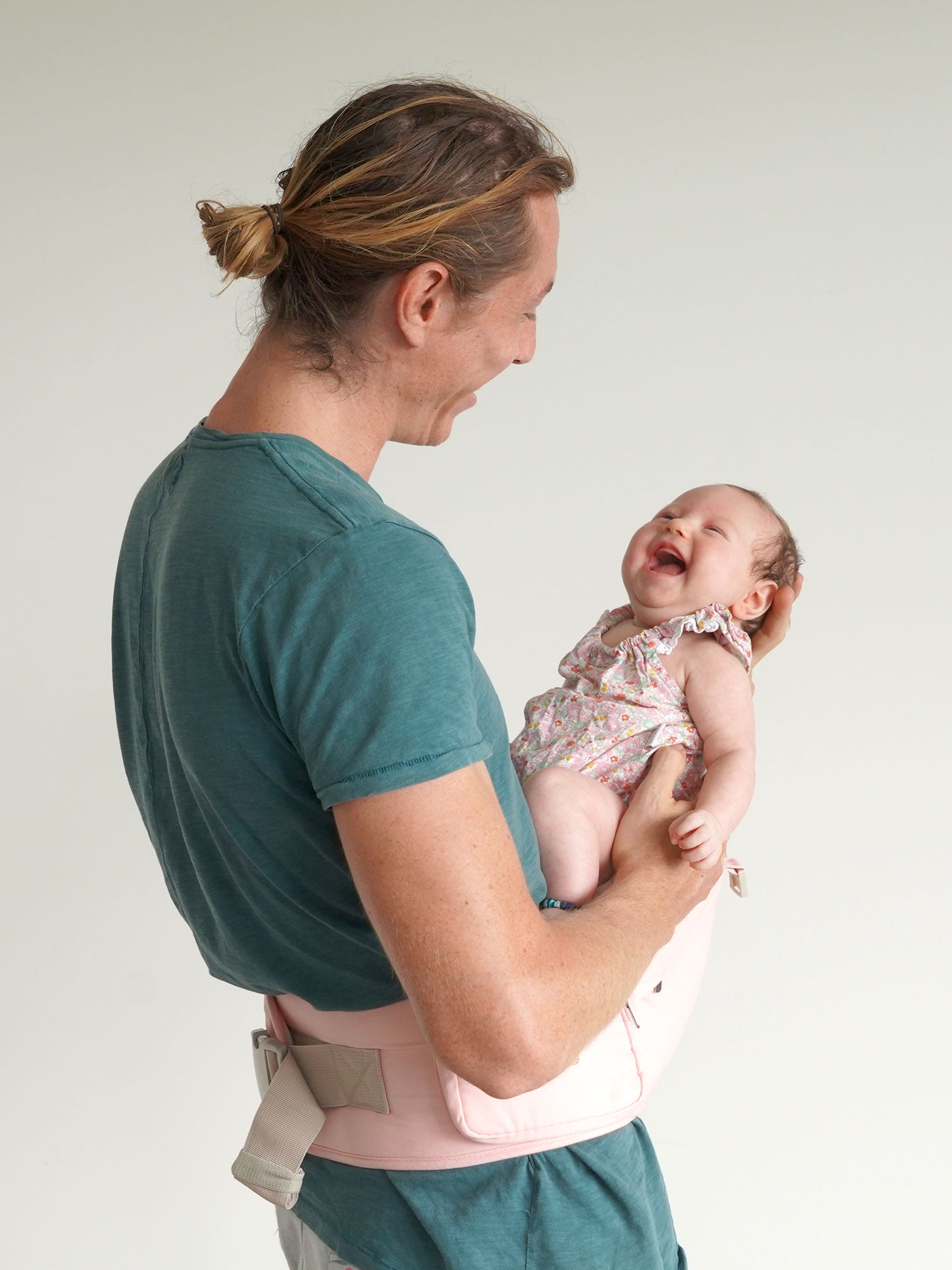Understanding Head Support for Babies

Understanding Head Support for Babies
Why?
Babies are delicate little creatures that require special care and attention. One particular aspect of caring for babies is providing adequate head support. As new parents, it can be overwhelming to navigate the different ways to support your baby's head, so we've put together this guide to help you understand the importance of head support for infants.
The Risks of Inadequate Head Support
Inadequate head support for your baby can lead to several undesired consequences. A baby's neck muscles are not yet fully developed and thus, they cannot support their heads independently. Failing to provide the necessary head support might put undue strain on these fragile muscles, potentially leading to injuries. In severe cases, it might even result in conditions like torticollis or a flat head syndrome, known as plagiocephaly. Furthermore, insufficient head support could risk your baby's airways getting blocked, which might lead to breathing difficulties. Therefore, ensuring proper head support is vital for the safety and healthy development of your baby.
Recognizing Signs of Inadequate Head Support
Understanding the signs of inadequate head support in babies is crucial for the prevention of potential complications. One of the most common signs is a tendency for the baby's head to flop forward or backward when lifted or held upright. Additionally, you may notice that the baby has difficulties in moving their head from side to side or seems to favour one side. In some instances, continuous crying or showing discomfort when lying flat could also be an indication. If your baby exhibits any of these signs, it is advisable to consult your paediatrician or a healthcare professional promptly. They can provide guidance and appropriate measures to ensure adequate head support for your baby's healthy development.
Addressing Common Concerns About Head Support
When it comes to head support for babies, many parents and caregivers have common concerns and questions. One of these is the fear of not providing adequate support, especially for newborns. Rest assured, while newborns do require careful handling, they are also resilient. Using a supportive pillow or a specially designed carrier can alleviate a lot of these worries.
Another common concern is about the right time to start encouraging a baby to hold their head up. Age-appropriate tummy time, guided by a healthcare professional, can help strengthen your baby's neck muscles over time and eventually, support their head independently. Remember, each baby is unique and will develop at their own pace, so don't rush the process.
Finally, many wonder about the long-term implications of inadequate head support. While severe cases can lead to conditions like torticollis or plagiocephaly, most issues are temporary and can be corrected with intervention and physical therapy. Always consult with your paediatrician if you have any concerns about your baby's head support and development.
Tips for Providing Proper Head Support for Your Baby
When handling your baby, it's critical to support their head and neck. Here are some practical tips to ensure you're providing appropriate head support:
- Hold Your Baby Correctly: Always cradle your baby's head when lifting them. One hand should support the head while the other supports the neck and bottom.
- Using Pillows for Support: Consider using a specially designed baby pillow when laying your baby down. These pillows can provide the necessary support and help in preventing flat spots.
- Appropriate Car Seat: Ensure your baby's car seat has adequate head support. Some car seats come with infant inserts that offer additional head and neck support.
- Strengthening Exercises: Introduce age-appropriate tummy time as recommended by your healthcare provider. It helps strengthen neck muscles, enabling them to support their head independently over time.
- Monitor Their Progress: Keep a close eye on your baby's development. Consult with your paediatrician if you notice any signs of discomfort or if your baby struggles to lift their head during tummy time.
Remember, every baby is unique, so patience is key. Always seek professional advice if you're unsure about anything related to your baby's head support and development.
Head Support During Breastfeeding
Breastfeeding is a bonding time for mother and baby, but it's also a time where proper head support is crucial. Here's how you can support your baby's head during breastfeeding:
- Use Your Arm: The crook of your arm is a perfect cradle for your baby's head. As your baby nurses, his or her head can rest comfortably on your forearm, providing support and alignment for the neck.
- Pillows Can Help: A nursing pillow can offer additional support. Place it on your lap and rest your baby on it, ensuring that the baby's head is level with your breasts.
- Proper Latching Position: In addition to offering head support, it's important to make sure your baby is in a proper latching position. The baby's head should be slightly tilted back, which helps the baby swallow easily and minimizes the risk of ear infections.
- Switch Sides Strategically: When switching from one breast to the other, make sure to reposition your baby's head properly. This transition provides an opportunity to ensure that your baby's head remains well-supported.
- Take Breaks: If your baby is nursing for a long time, take short breaks to adjust your baby's position and your arm. Fatigue can compromise your ability to hold your baby's head securely.
Remember, don't hesitate to ask for help from a lactation consultant or your healthcare provider if you're having trouble with head support during breastfeeding. They can provide hands-on demonstrations and address any concerns you may have.
Importance of Head and Neck Support During Sleep
Sleep is another crucial period when baby's head and neck support should not be overlooked. Ensuring the right support can prevent conditions such as flat head syndrome (plagiocephaly), and maintain the natural curvature of your baby's spine. A well-supported neck during sleep means less stress on the baby's developing muscles, allowing them to relax more fully. Specialised pillows and mattresses designed for infants can assist in providing the necessary support. It's essential to note that a baby should always be put to sleep on their back, as recommended by the American Academy of Paediatrics, for safety and to reduce the risk of Sudden Infant Death Syndrome (SIDS). Always consult with a paediatrician or a certified child sleep expert if you have any concerns about your baby's sleep positioning or their head and neck support during sleep.
Concerns About Flat Spots on Your Baby's Head
Many parents often express concerns about flat spots, or positional plagiocephaly, developing on their infant's head. This is typically due to babies spending excessive time lying on their back. However, it's important to remember that these flat spots are usually temporary and pose no threat to the baby's brain development. They tend to round out once the baby starts sitting up and spending less time on their back. Rotating the baby's position when they sleep, providing ample tummy time, and avoiding too much time in car seats or carriers when they're awake can help prevent these flat spots. However, if you notice an unusual or persistent flat spot, it's advisable to consult with your paediatrician who may recommend a specialist if needed. Always remember, each infant is unique and develops at their own pace.
Tips for Development of Baby's Neck Muscles
The development of neck muscles is a crucial aspect of a baby's growth, with a direct impact on their motor skills and overall physical development. A strong neck aids in the ability of an infant to hold their head up independently, paving the way for milestones such as sitting, crawling, and eventually walking. The strengthening of neck muscles begins with tummy time, a supervised activity where the baby is placed on their stomach. This practice encourages infants to lift their head, hence engaging and strengthening their neck muscles. However, during activities like feeding and carrying, it's important to provide the necessary head and neck support to babies as their neck muscles are still developing and are not yet strong enough to support their head continuously. Remember, each baby develops at their own pace, and if you have any concerns about your baby's neck development, it's advisable to consult with a paediatrician.
- Tummy Time: Incorporate tummy time into your baby's daily routine. Start with a few minutes a day and gradually increase as your baby becomes comfortable. This exercise strengthens the neck and upper body and encourages your baby to lift their head.
- Encourage Movement: Placing toys and other interesting objects around your baby during tummy time will encourage them to turn their head, thus working out their neck muscles.
- Baby Yoga: Gentle baby yoga exercises can also help to strengthen your baby's neck muscles. Always ensure these activities are supervised by a professional to assure your baby's safety.
- Hold Upright: Carry your baby in an upright position for short periods when they're awake. This encourages them to use their neck muscles to support their head.
- Limit Time in Carriers and Bouncers: While baby carriers and bouncers can be helpful, too much time in them can limit your baby's movement and slow down the development of their neck muscles. Balance is key.
Remember, every baby develops at their own pace. Regularly consult with a paediatrician to ensure your baby's development is on track.
Choosing the Right Baby Carrier for Your Baby
Choosing the right baby carrier is crucial not only for the comfort of both parent and baby, but also to ensure proper head and neck support for the infant. Look for a carrier that offers firm, adjustable head support, especially for newborns who can't yet hold up their head independently. Check that the carrier spreads wide across your baby's back to distribute weight evenly, avoiding undue pressure on the baby's spine. Ensure the carrier allows the baby to face towards you, as this is the safest and most beneficial position for physical development and bonding. Consider carriers with padded shoulder straps and waistband to reduce strain on your back and shoulders. Finally, don't forget to assess the carrier’s material - it should be breathable and gentle on your baby's skin. Remember, it's not one-size-fits-all; both you and your baby should feel comfortable using the carrier.
~ jinki @ jinki.com




